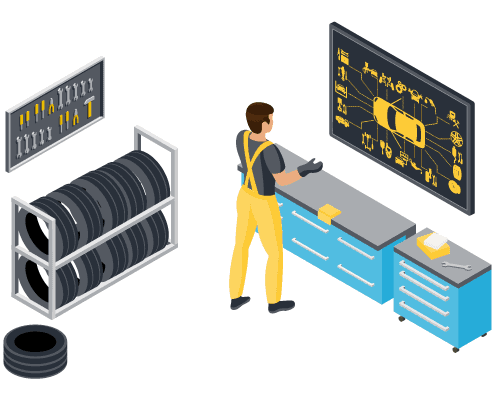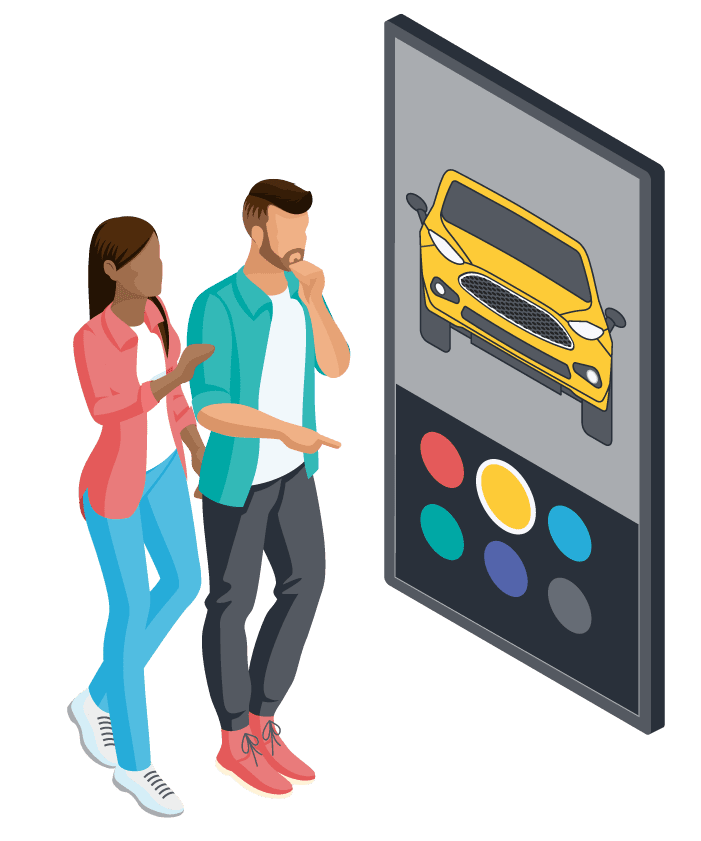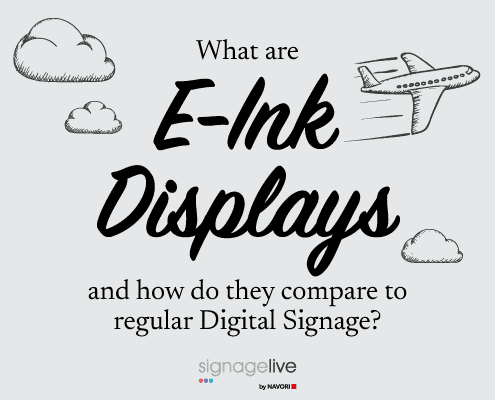
In recent years, there has been a significant increase in the use of Digital Signage in the motor vehicle maintenance and repair market. The impact has been far-reaching, enabling garages to expand their client databases, as well as improve customer service and streamline operations.
Here are some ways in which Digital Signage continues to help drive the growth of the sector.
Attracting new customers: Digital Signage can be used to showcase services and products in a visually appealing way that captures the attention of potential customers. This can be especially effective for new services or limited-time offers, helping to draw in new business.
Content management systems (CMS) can offer as many as 500+ free as well as subscription-based content creation tools to help teams of all design abilities produce professional-looking advertising. These tools include integrated apps for everything from Canva to Adobe Creative Cloud, as well as free-to-use widgets, such as countdown timers to countdown the time remaining on any promoted special offer.
Increasing sales: Digital Signage can be used to promote services and special offers, encouraging customers to make a purchase. It can also be used to upsell and cross-sell related services, increasing the average order value.
With CMS platforms, garages can schedule relevant content to appear at specific times and on selected screens. Integrated no-code content tools, like Screenfeed Connect are ideal for personalising advertising designs, enabling staff to pull in their own business information and imagery from any connected data source.
For instance, garage repair success statistics, customer testimonials, as well as “before and after” car repair images can be integrated neatly into content designs to inspire confidence in customers, who are waiting for their car service in reception areas.
If customers are due to collect their cars at a certain time, the on-screen content can be changed to reflect what might personally interest them. For example, if they have just had their MOT carried out, the on-screen content could highlight a special offer for those who decide to book next year’s test, before a particular cut-off date.
Providing information: Digital Signage can be used to display important information about the business, such as its location, hours of operation, and contact details. It can also be used to provide information about the services offered, such as pricing and availability.
With CMS platforms, garages can use their Digital Signage to cycle through a wider range of services. Unlike with printed signage, there is no limitation on how much information you’re able to share.
Multi-zone template designs also ensure that you can showcase more services at the same time, so customers can see, at a glance, more of what you offer.
Enhancing the customer experience: Digital Signage can be used to create a more interactive and engaging customer experience. For example, it can be used to show video demonstrations of services or provide personalised recommendations, based on previous repairs.
With self-service touch-screen kiosk solutions, garages have more opportunity to interact with customers and personalise their experience.
Such solutions can prompt customers for their loyalty card details, and then use individual ordering histories to bring up relevant offers and services that might personally appeal to them. For instance, if they have ordered a winter check in recent months, a promotion could be triggered to offer them a discount on a forthcoming summer check.
Saving time: Digital Signage can be used to display real-time wait times for services, helping customers to plan their visit and avoid long lines. It can also be used to reduce the need for face-to-face interactions with staff, saving time for both customers and employees.
For customers who do have to wait on-site for repairs to be completed, integrated CMS services, such as Screenfeed and Seenspire offer a way to keep them entertained and reduce perceived wait times. These platforms allow everything from news and traffic updates to be broadcast on-screen.

Flexibility: Digital Signage can be easily updated and changed to reflect new services, specials, and events. This allows businesses to quickly and easily adapt to changes in their business, such as new product releases or seasonal promotions.
With cloud-based Digital Signage, staff can instantly update on-screen information from absolutely anywhere. Advanced CMS features ensure the utmost flexibility, allowing live content to be edited.
Integrated CMS tools, such as Screenfeed Connect also ensure that on-screen information like pricing lists automatically update, whenever the relevant connected Google Sheet is edited.
Cost-effectiveness: Digital Signage is often more cost-effective than traditional signage, as it requires less maintenance and can be easily updated without the need for printing new materials. This can help to reduce overhead costs and improve profitability.
Cloud-based Digital Signage, in particular, is both cost-efficient and time-saving, requiring no investment in software licences, leases for hosting spaces, or bandwidth and installations. Everything is included in a cost-effective subscription – even on-going software updates and security checks, which the CMS providers will perform. Cloud-based CMs platforms are also designed with built-in tools to handle upscaling, so that the solution they provide can grow and evolve with the needs of the business.
Enhancing brand image: Digital Signage can be used to strengthen a business’s brand image by displaying consistent branding and messaging across all locations. This can help to create a cohesive and professional appearance, improving the overall customer experience.
CMS features, such as Nested Playlists are ideal for garage chains. They enable centralised headquarter teams to drop in an entire Playlist, or parts of one into local garage content line-ups to ensure brand consistency across every location. With In-built Tag Managers, content can also be categorised by region, and then sent out, all at the same time, to garages in the relevant geographical area.
Improving efficiency: Digital Signage can be used to streamline the repair process by providing real-time updates on the status of repairs and allowing customers to track the progress of their vehicle. This can help to improve customer satisfaction and increase efficiency within the business.
In conclusion, the rise of Digital Signage in the motor vehicle maintenance and repair market is contributing to the growth of these businesses. Its ability to attract new customers, increase sales, provide information, enhance the customer experience, save time, and improve efficiency makes it an invaluable tool for companies looking to stay competitive in today’s market.




You must be logged in to post a comment.